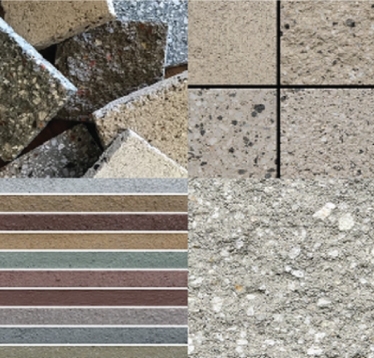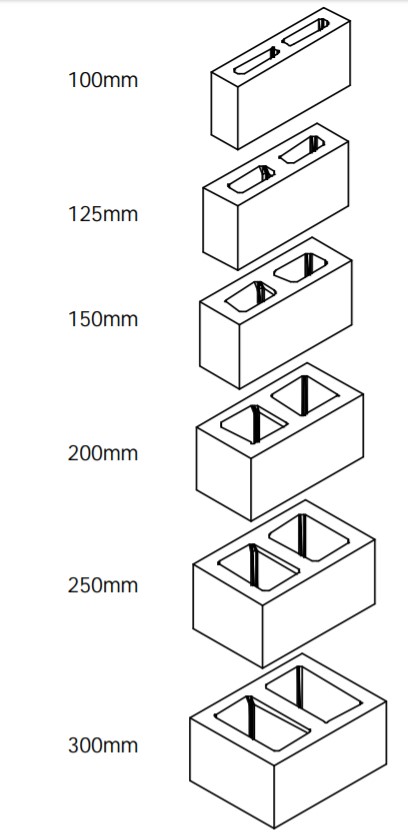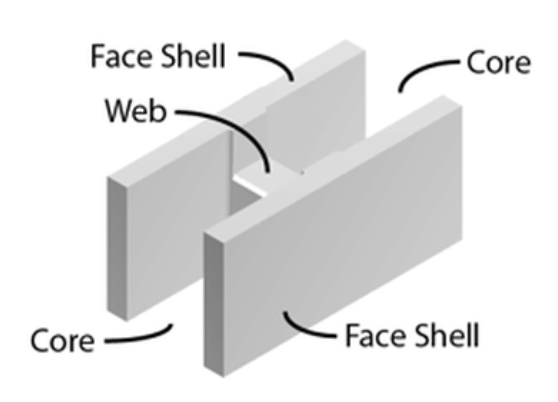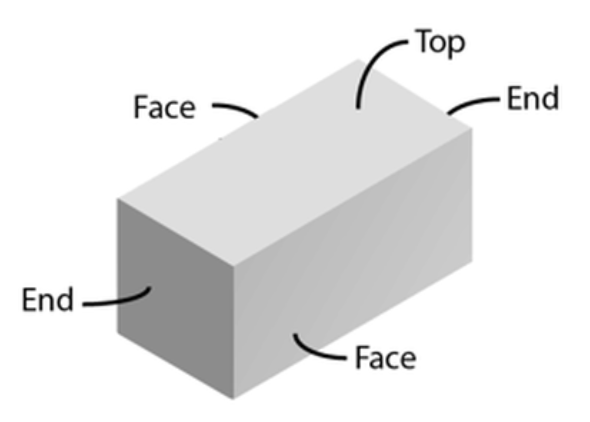ROCKS IN A BOX
Mix Design, Color and Shape
Concrete Masonry Units (CMU), are simply a modular form of concrete, consisting of a concrete mix design (the “rocks”), which are poured into a steel CMU shape mold (the “box”), and then steam cured, palletized and made ready for shipping, once design strengths are achieved.


MIX DESIGN
The reason we call the concrete a “mix design” is because it is made up of specific ingredients in specific quantities, to meet a series of design and engineering criteria for both color and strength. The ingredients in a mix design typically include most, or all, of the following:
• Small Aggregates
• Medium Aggregates
• Sand
• Cement
• Water
• Iron Oxide Pigment(s)
• Other Additives (Eg. Integral Water Repellant)

SHAPE
There are literally 100’s of size and shape variations available. Just as the shape of a cake pan will define the shape of a cake, so does the shape of the CMU mold determine the shape of the CMU.
In expressing the size of a CMU, Standard concrete block masonry units are commonly available in nominal widths of 100 mm, 150, 200, 250, and 300 mm.
It is necessary to state the dimensions in the proper order – Width, Height and Length. A helpful tool for remembering this is the phrase “Wine Has Legs” (or W x H x L).
Mold options include variations in:
W – block width, 100mm (4”), 150mm(6”), 20cm(8”), 250mm(10”), 300mm(12”) nominal.
H – block height (‘Full height’ 200mm and ’Half High’ 10mm) nominal.
L – block length (‘standard length’ 400mm and ‘Halfs’ 200mm) nominal.

A typical unit includes several important elements, including face shells, webs, and cores. The “face shells” are the surfaces facing the inside and outside of the wall. The “web” or “webs” are the portions of the block connecting the two face shells. And the “cores”, are the open voids between the face shells and the webs. However, solid units do not have cores, and thus, do not have face shells nor webs.

Standard Unit
While this unit may look different than CMU from the past, it is indeed a popular shape used for fully-grouted and reinforced structures. The ends are open, and the web is lower than the top of the block, allowing room for vertical and horizontal rebar, (more on that later).

Solid Unit
CMU is also available in solid units, particularly for veneer applications, as well as wall cap details. For instance, a common cap shape is a 10cm solid unit, most often made with the same mix design as the wall below the cap.
DIMENSIONS
There are two terms used in referring to dimensions: Modular (nominal) and Basic (manufactured or actual)
- Actual Dimensions are the measured dimension of the unit. CSA Standards allow the actual dimensions a permissible variation from the specified dimension. Each individual product has its respective tolerances.
-
Nominal Dimensions are those used in stating unit size. They are equal to the specified dimension, plus the thickness of the mortar joint. The nominal dimensions compensate for a 10mm joint for CMU. (For example: the actual dimension of the most common size precision block is 190 x 190 x 390, and the nominal dimension of that same precision block is 200 x 200 x 400).
As you can imagine, the possibilities. To-date, Basalite Concrete Products has produced more than four-thousand concrete mix designs and over four-hundred shapes.

New for REVIT® Users:
Masonry design in REVIT® is easier than ever before!
There is a fantastic new plug-in, called MasonryiQ™, which allows you to load colour and texture options for concrete masonry into a design palette that is project-specific, unleashing you to create unique wall types and calculated blends, using ratios and parameters to better express your ideas. The plug-in also offers intelligent views of corner conditions, section cuts, window and door openings, as well as control joints and bond beams. You will be amazed at how easy it is to iterate your design ideas, inside of REVIT®, and with built-in BIM intelligence like never before.

Materials Used: Ground Face Glacier Concrete Block

Prince George, BC
Materials Used: Ground Face Grey Concrete Block

Science Building
Materials Used: Ground Face 70/30 white Concrete Block

Materials Used: Ground Face Sandstone Concrete Block
